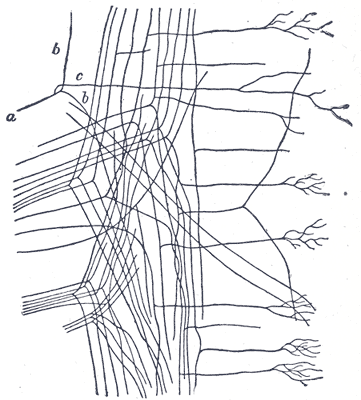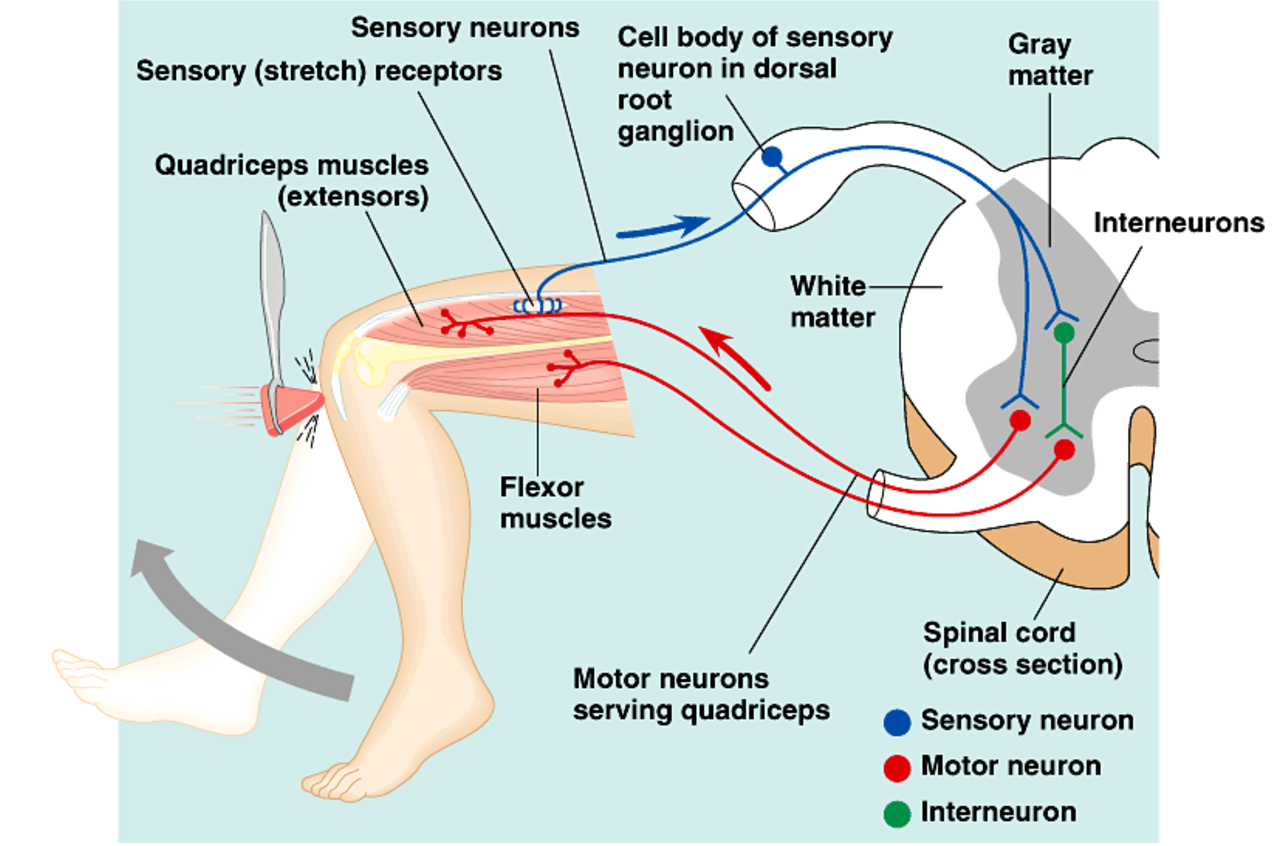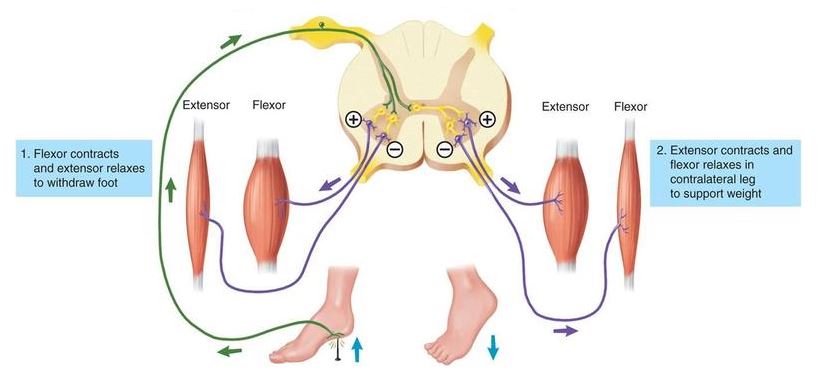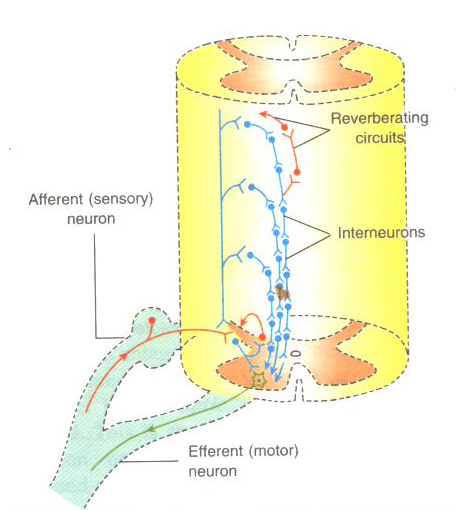Spinal Reflexes Top The sense of perception is a function of the higher levels of the nervous system, so activity in pathways that exist in their entirety within the spinal cord are not accompanied by any sensation. Following spinal cord transection, patients have no knowledge of events occuring below the level of the lesion, and have no motor control over their muscles below that level. However neural pathways in the spinal cord below the lesion continue to function and these pathways are responsible for the reflex activities of the detached length of cord. All reflexes have an afferent pathway that uses a specific type of sensory receptor, at least one synapse in the pathway, and an efferent pathway that connects to a muscle or gland. The site of the synapse is generally within the spinal cord, although the enteric nervous system also participates in reflex activity confined to the gut wall. Synaptic transmission is unidirectional – from pre-synaptic ending on to post-synaptic membrane, because the neurotransmitter is released from the pre-synaptic ending and acts on the receptors in the post-synaptic membrane. Some reflexes are monosynaptic, such as the stretch reflex. Other reflex pathways are polysynaptic, and include interneurones that connect the sensory and effector neurones. |
|
The simplest reflex arc is the monosynaptic (stretch) reflex. The afferent fibres from the muscle spindles in a muscle enter the dorsal root and proceed to the ventral horn of the spinal cord. There they synapse on motoneurones that project back to the same muscle, or muscles in the same functional group. This, the simplest of reflex pathways, is preserved following spinal transection, and is tested by clinicians who use a tendon hammer to apply a small stretch to the muscle. This reflex is called the stretch reflex or knee jerk reflex (and sometimes the myotatic reflex), because it is initiated by stretching the muscle. The reflex is an essential part of the motor control system in the intact nervous system, and allows a dynamic, fast feedback to occur from the active muscles. |
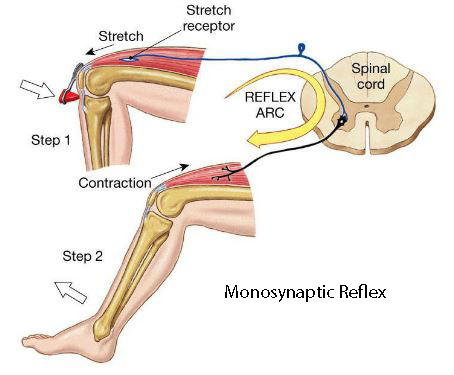 * * |
The stretch reflex has a number of names:
All have one thing in common, i.e. sudden stretch of muscle spindles in a muscle induced by the tap of a tendon hammer causes a reflex contraction of the stretched muscle using the monosynaptic reflex pathway. |
It may also be called the
|
The Tonic Stretch Reflex Top Muscle spindles respond to changes in length of muscles and the speed of those changes. They are also acutely sensitive to vibration, and produce reflex activity when vibrators are applied to muscles. These reflex responses consist of a tonic contraction of the muscle that is subjected to vibration, and can be maintained for substantial periods of time. This maintained reflex response is sometimes called the Tonic Stretch Reflex, and can be used by physiotherapists to help preserve muscle tone and simulate mild exercise after certain injuries. |
|
| Pathways of different reflexes | Monosynaptic Stretch reflex
|
